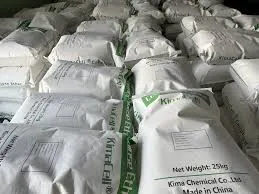
Sep . 28, 2024 10:01 Back to list
Understanding Ashland Hydroxyethyl Cellulose for Enhanced Applications in Various Industries
The Versatility of Hydroxyethyl Cellulose in Industry A Focus on Ashland Products
Hydroxyethyl cellulose (HEC) is an important polymeric compound that has made significant strides in various industries due to its unique properties. Among the prominent manufacturers of this versatile material is Ashland, a global leader in specialty chemicals. HEC is a non-ionic, water-soluble cellulose ether that has garnered attention for its thickening, binding, and film-forming capabilities.
Chemical Properties and Structure
Hydroxyethyl cellulose is derived from cellulose, the most abundant organic polymer on Earth, and is modified through the introduction of hydroxyethyl groups. This modification enhances the solubility of cellulose in cold water, enabling its use in numerous applications. The structure of HEC features a backbone of glucose units linked by β-1,4-glycosidic bonds, with hydroxyethyl groups attached to the hydroxyl positions on the glucose rings. This alteration not only increases the solubility in water but also improves its reactivity and performance characteristics.
Applications in Various Industries
One of the remarkable aspects of HEC is its versatility, which allows it to play an essential role in various industries.
1. Cosmetics and Personal Care In the cosmetics industry, HEC is widely used as a thickening agent in creams, lotions, shampoos, and other personal care products. It helps stabilize emulsions, enhances the texture, and contributes to the overall sensory experience of the products. Its ability to retain moisture also makes it a desirable component in moisturizing formulations.
ashland hydroxyethyl cellulose

2. Pharmaceuticals HEC is utilized in the pharmaceutical sector as a binder in tablets and as a thickening agent in oral and topical formulations. Its non-toxicity and compatibility with various active pharmaceutical ingredients make it particularly appealing for use in drug formulations. Furthermore, it can modify the release profile of drugs, leading to controlled-release formulations that improve patient compliance.
3. Construction Industry In construction, HEC serves as a key additive in mortar, cement, tile adhesives, and paints. It enhances the workability and adhesion of these materials, allowing for greater flexibility and ease of application. Additionally, HEC aids in water retention, ensuring that the mixtures remain workable for a longer period, which is crucial for large-scale construction projects.
4. Food Industry In the food sector, hydroxyethyl cellulose is regarded as a food additive, functioning as a thickener, stabilizer, and emulsifier. Its ability to improve texture and prevent phase separation in food products makes it an attractive ingredient, particularly in sauces and dressings. The FDA categorizes it as Generally Recognized As Safe (GRAS), which supports its use in food applications.
Environmental Considerations
As the world increasingly prioritizes sustainability, the environmental impact of chemical products has come under scrutiny. Companies like Ashland are dedicated to producing HEC in a manner that minimizes ecological harm. HEC is biodegradable, which means it can break down naturally over time, reducing its environmental footprint. Moreover, Ashland’s commitment to sustainability extends beyond its product offerings, as they strive to implement eco-friendly practices in their manufacturing processes.
Conclusion
The significance of hydroxyethyl cellulose, particularly products developed by Ashland, cannot be overstated. From cosmetics to construction, pharmaceuticals to food, HEC's diverse applications and advantageous properties underpin its vital role in numerous industries. As research and development continue to advance, the potential uses for HEC may expand even further, demonstrating its adaptability and resilience in the ever-evolving landscape of specialty chemicals. In an age where sustainability is paramount, HEC offers a balance of functionality and environmental responsibility, making it a resource worth investing in for a variety of applications.
-
Versatile Hpmc Uses in Different Industries
NewsJun.19,2025
-
Redispersible Powder's Role in Enhancing Durability of Construction Products
NewsJun.19,2025
-
Hydroxyethyl Cellulose Applications Driving Green Industrial Processes
NewsJun.19,2025
-
Exploring Different Redispersible Polymer Powder
NewsJun.19,2025
-
Choosing the Right Mortar Bonding Agent
NewsJun.19,2025
-
Applications and Significance of China Hpmc in Modern Industries
NewsJun.19,2025







